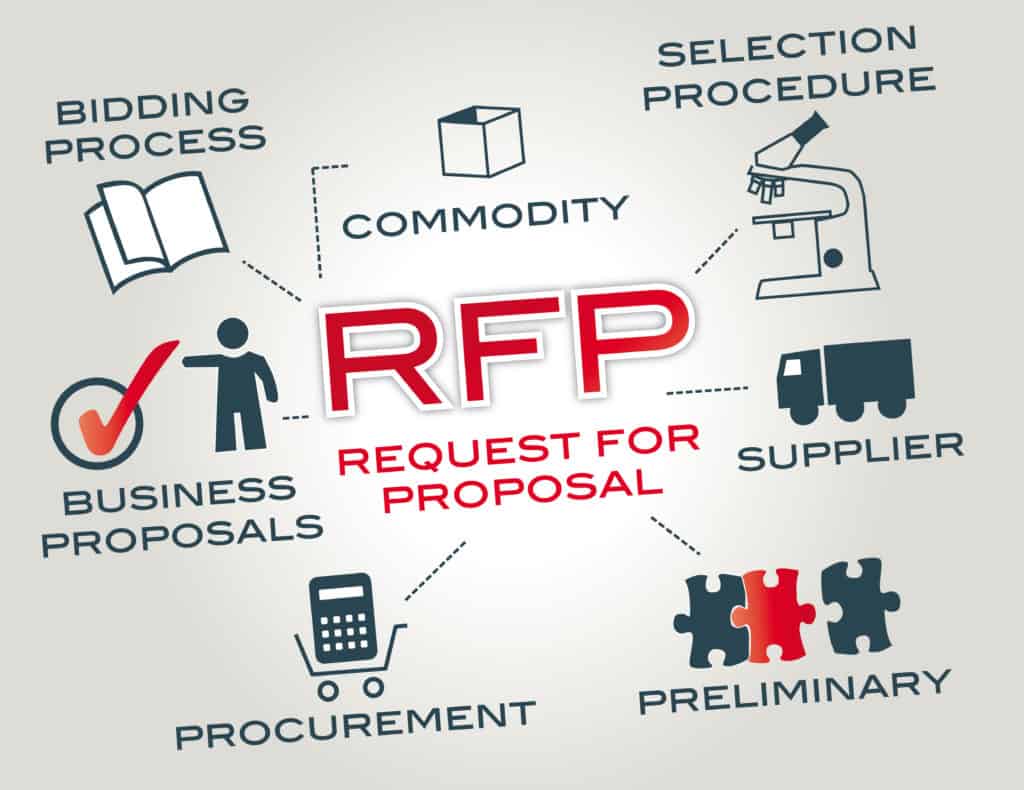
Professional plumbers require more than just technical expertise. They also need to know how to bid jobs in a professional way. In other words, when homeowners or business owners ask for a quote, plumbing professionals should be ready to furnish them with an accurate and honest estimate.
Table of Contents
There are a few reasons why this is important. The first is that, by providing a reasonable quote and transparent pricing information, it’s possible to earn the loyalty and trust of the customer. Additionally, bidding for jobs is the only way to ensure you’re actually turning a profit.
Even for those who have the very best intentions, bidding a job can be easier said than done. And, if you do it incorrectly, you risk either losing business, or losing profits. Either way, the consequences can be severe.
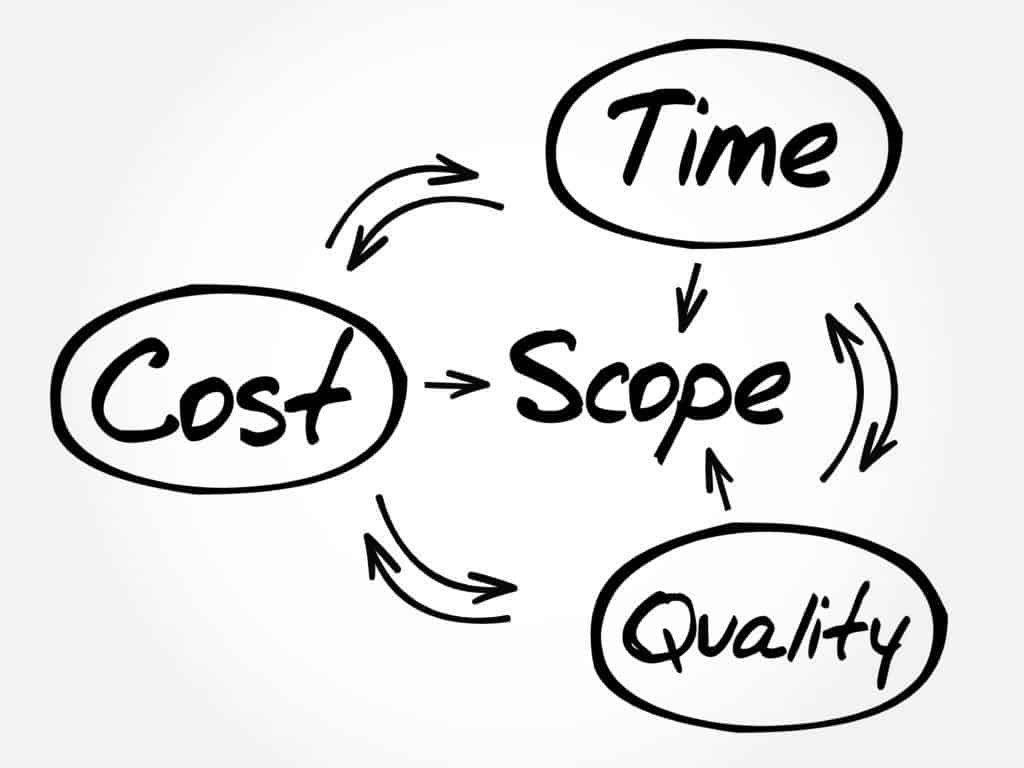
How to Bid Plumbing Jobs: Our Tips
So, what’s the most important thing for plumbers to keep in mind as they provide a plumbing estimate to a potential customer? According to Carter’s My Plumber founder Lisa Carter, the key ingredient is knowledge.
“Be licensed and knowledgeable about the task at hand,” says Carter. ” Just being licensed does not make you experienced. For instance, a fourth year Journeyman who just graduated from plumbing school and passed his exam would be less knowledgeable in some areas just because of the lack of field experience.”
Carter says another thing to keep in mind is the importance of diagnostics. “Field verify all the underlying conditions, which will provide you with a clearer sense of the scope of work required,” Carter explains. Sometimes, this may require the use of special diagnostic tools. “Occasionally, a special tool is needed to diagnose a task,” Carter expounds. “For example, a water heater element that has gone bad should be tested first.”
There are important financial calculations, as well, to ensure the right profit margin. Carter says it’s important to have a list of materials needed, as well as a clear sense of the time and labor that will be required. These costs, plus profit, plus overhead should provide a basic quote for the job.

What Can Affect the Cost of Plumbing Services?
With those basic parameters out of the way, let’s dig a little deeper into some the factors that can impact a plumbing estimate. In particular, there are four important considerations that will affect how much it will cost to complete the job and maintain a decent profit margin.
The Industry Standards
First, the plumbing industry itself sets certain standards; these are important to keep in mind when giving a plumbing estimate. For example, there are industry standards for how much a plumber makes per hour, usually between $45 and $200. You can also look at plumbing industry standards per job, not per hour; certain typical jobs will come with a set cost of $175 to $400.
By using these standards, you can arrive at a ballpark estimate of the labor costs you should be charging for plumbing jobs in your region. Note that your level of plumbing experience will dictate whether you fall at the higher end or the lower end of the range.
Something else to keep in mind about industry standards is that plumbers need to account for their travel time. There are a couple of ways to handle this. The first is to charge a trip fee, or service fee; for example, no matter what actions the customer decides to take, you might charge a flat rate of $60 just for showing up. Alternatively, consider charging for a minimum of one or two hours, even if the job is small and doesn’t take quite that long.
As for choosing between a flat rate versus an hourly rate, it’s usually a matter of how clear-cut the job is. For something straightforward, like a toilet installation, a flat rate may be required. For something that’s more complex or specialized, hourly probably makes more sense. Note that this is an area where diagnostics are important; you’ll want to have a clear sense of any underlying factors that could complicate the job.
The bottom line for anyone looking to quote plumbing jobs, based on hourly rate or otherwise: The industry standards provide useful guardrails. If your quote is outside those guidelines, you at least need to have a clear, compelling reason why… and if you don’t, there’s a decent chance that you need to rethink your approach to making a bid.
Salary Needs
A second factor that can influence your bid for plumbing work: Your own salary needs.
Simply put, in addition to understanding the industry and regional standards, you also need to understand the kind of salary you require to make ends meet. Your rate must reflect your personal financial needs, so make sure you take some time to consider them.
There are a few questions you can ask yourself as you take inventory of your salary needs. Some examples include:
- How much money will you need to bring in to keep the doors of your plumbing company open?
- How much money do you need to bring in to make payroll?
- Do you plan to offer free quotes? (If you do, then you should factor in the time required for this.)
Here, the bottom line is simply this: You need to price each plumbing job in a way that supports your plumbing business overall. This may look little different from one company to the next, but you’ll ultimately need to determine a percentage of each job that needs to go toward operational expenses, a percentage for your own salary, and a portion for business growth/savings. (You may simply use the “rule of threes” to divide your profits into these three categories.)
Ease and Access
A third category to think about when making bids for jobs: The ease of access, as well as the size of the job.
This is where we’ll reiterate just how important it is to spend plenty of time investigating the job site and diagnosing any underlying issues. Sometimes you may hear about a job that seems really simple on paper, but as you explore the job site, you realize there may be some serious obstacles that make it more time-consuming, more complicated, or simply harder. These obstacles may make the project costlier for the customer; or, they mean you simply make less money, especially if you don’t go by an hourly rate.
Now, it should go without saying that not all obstacles or circumstances can be anticipated. Sometimes, you may simply run into an unforeseeable issue. Nevertheless, it’s crucial to do your due diligence, and your customer should appreciate the effort you make to be up-front with them about the complexity of the job.
In addition to ease and access, also think about the size of the job. A job that’s more complicated may require a little bit of research in order for you to price it correctly; make sure you factor this research time into your estimate! And of course, if you have to hire subcontractors to assist with the job, you’ll obviously want to know about any of their own pricing or payment requirements, and factor that into your quote. (When working with subcontractors, you’ll probably want to add three or four percent, just as a buffer.)
Extra Materials and Additional Expenses
A fourth and final category to keep in mind as you price jobs: Additional expenses or materials.
The custom is that, if a job is going to involve extra materials, that’s not included in the main estimate; these materials are listed separately.
And if you offer auxiliary services, such as debris removal, it’s important to inform the customer about any extra costs that will be involved.
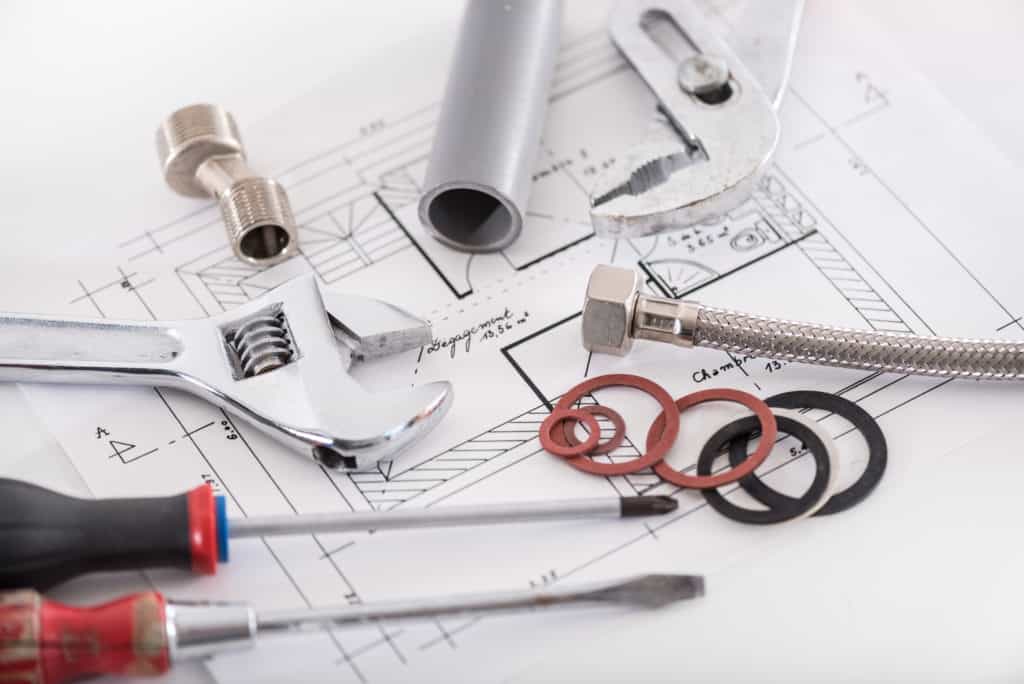
General Guidance for Bidding on Plumbing Jobs
The four categories we listed above provide some helpful parameters for pricing a plumbing job. With that said, there are some additional guidelines that you’ll need to keep in mind as you aim for the best estimate. Here are just a few strategies, principles, and best practices for plumbing professionals to bear in mind.
Make Sure You Understand the Customer's Expectations
It takes a lot of work to put in a bid, and to provide your customer with an accurate estimate. And yet, this is work that you are likely doing for free, with a real chance that you’ll not win the bid or receive any compensation for your work. One upshot of all this is that you really need to be sure you fully understand your customers’ expectations.
Those expectations will vary from one customer to the next. Bidding on a big, government contract? You’re probably going to have to put in a lot of work to develop a detailed, extremely thorough proposal. Handling a tiny plumbing project for a local homeowner? A more modest, verbal estimate may be all they’re anticipating from you.
On the one hand, you don’t want to over-complicate things. Don’t put in government contract-level work for a project that’s quite a bit simpler in scope, or for a customer whose expectations are much more basic. At the same time, though, it’s important to always sell your professionalism, your transparency, and your attention to detail, no matter the scale of the project. Also remember that, no matter the kind of customer you’re working with, it’s always best to be punctual with your quote, and to provide as much budgetary flexibility as you can.
Be Precise in Pricing Your Materials
When bidding for a plumbing job, it’s crucial that you have a good, accurate sense of material costs. In additional to your own hourly rate, material costs will be a crucial factor in how much you charge the customer.
Here again, it’s important to consider the customer you’re working with. One customer may really want you to go all out, selecting materials that offer all the bells and whistles. Meanwhile, another customer may want something that’s less flashy but more budget friendly. It’s always a good idea to dig into these matters of preference with your customers, earning their business through careful listening and personalization.
To put it another way, some customers are going to want you to bring them the very best materials, period. Others will prefer that you consult with them, and help them determine the best materials within their specified price range. You’ll need to be ready to make some judicious recommendations to customers in the latter group, and to be honest with them about any limitations in their price range. (For example, if it’s simply not possible to find durable or sturdy materials at their specified price point, you’ll need to make sure you’re candid about that, to avoid any false expectations.)
One additional point to consider is that some materials may require you to have certain tools or equipment on hand, just to install them properly. That can also impact the pricing of your plumbing bid.
The bottom line here is that there are a lot of small, complicating factors to keep in mind as you price your plumbing jobs, especially when it comes to estimating material costs.
Consider Your Staffing Needs
When you put in a bid for new plumbing jobs, materials and equipment should be your first line item considerations. But shortly thereafter, you should think about staffing and crew needs.
Of course, this may not be an issue, not if you plan on doing everything yourself… including putting together the plumbing drawings or plumbing blueprints you need. But for many projects, including larger or more advanced ones, you’ll need to factor in assistants, subcontractors, etc.
This can get really expensive really fast; obviously, the more people you bring in for the job, the more you’re going to have to pay in staffing costs. A good starting point is to think through each aspect of the job and make sure you have a crystal-clear idea of how many people are needed. Know how many Master-level plumbers you’ll need to supervise Journeymen. Know what each job description entails, and how each member of the team is contributing value to the overall project.
Generally speaking, you’ll need to have an hourly rate for each member of the crew in order to put in your bid. This hourly rate will differ depending on the experience rate of each team member; for example, it’s perfectly fair to have Masters make more per hour than Journeymen do. Note that, as you put together your bid, you can choose to aggregate these rates per hour in order to simplify your pricing structure. Finally, remember that having a larger crew may mean paying more for insurance, another key consideration as you develop an estimate.
Make the Case for Your Business
Here’s something that often goes underappreciated among those seeking new work: A key part of putting together a bid is pitching your business. Remember, you’re not the only one out there bidding for new jobs. Most of the time, when you make a play for new jobs, you can anticipate that there you have some competitors. As such, it’s essential that you show why your plumbing business stands out from the rest.
One way to make your business stand out is simply to show that you’re hungry to earn the customer’s trust. You can do this by ensuring that yours is the most thorough and professional estimate they receive. This doesn’t mean each quote needs to be extremely long, but it should showcase real attention to detail at every level, including basic formatting and aesthetics.
Also, when courting new customers, look for opportunities to speak to the things that set your business apart. Maybe you have more experience than anyone else in town. Maybe you offer better warranties. Maybe you simply offer the friendliest service. These are the kinds of things that can help you win plumbing jobs, even if your hourly rate is a little higher than the next person’s.
So, to summarize, when you put in a quote… even a very simple one… remember that you’re not just providing a pricing estimate. You’re also delivering a pitch for your business. And as a PS: There are a lot of outstanding programs you can use to generate a proposal that looks highly polished and professional.
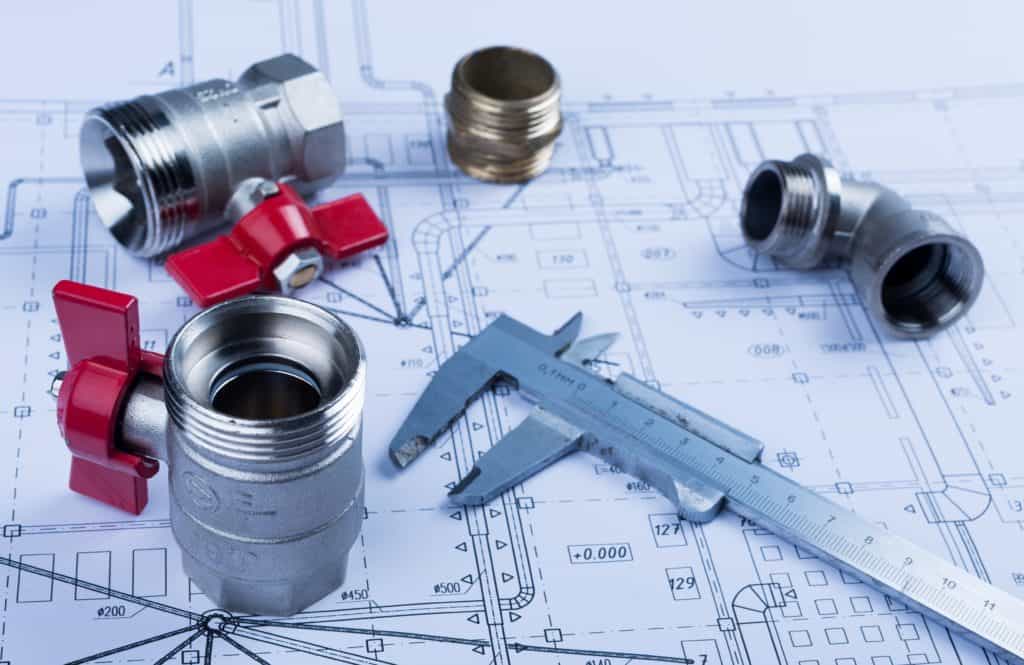
Understanding the Essential Plumbing Documents
For plumbing professionals who are bidding for new jobs, there are a handful of documents that you’ll want to know about. These documents can help ensure you’re providing a truly informed and intelligent quote.
Plumbing Drawings
First, for most large-scale jobs, you’ll want to be sure you have the right blueprints and drawings in place. Note that you may need plumbing blueprints as well as the more general blueprints for the home or business. Plumbing drawings are typically included among the construction drawings; you may be able to get them from the builder or the homeowner.
Site plans, architectural drawings, and construction drawings can all help you determine the scope and complexity of a large-scale plumbing job. Thus, they can help you provide a more accurate material cost and hourly rate for your crew.
Basically, the right plumbing sketches can help you to see the job site in its full complexity, and to get a better sense of any plumbing challenges you may face.
The Plumbing Takeoff
What are we talking about when we talk about the plumbing takeoff?
This is basically a precise, line item accounting of all the materials you’ll need to complete the work at hand. It will also provide insight into added workers, or other special considerations for the plumbing project in question. In a sense, you can think of the takeoff as a really beefed-up estimate.
Many plumbing professionals will work on their takeoffs by using the blueprints and drawings, and by also using different colored pencils to sketch out varied types of water piping or other materials that are needed.
Of course, you can work on the takeoff in whatever way makes sense for you and your business. Just know that this can be a really valuable resource as you make bids on different plumbing jobs, particularly more complex ones.
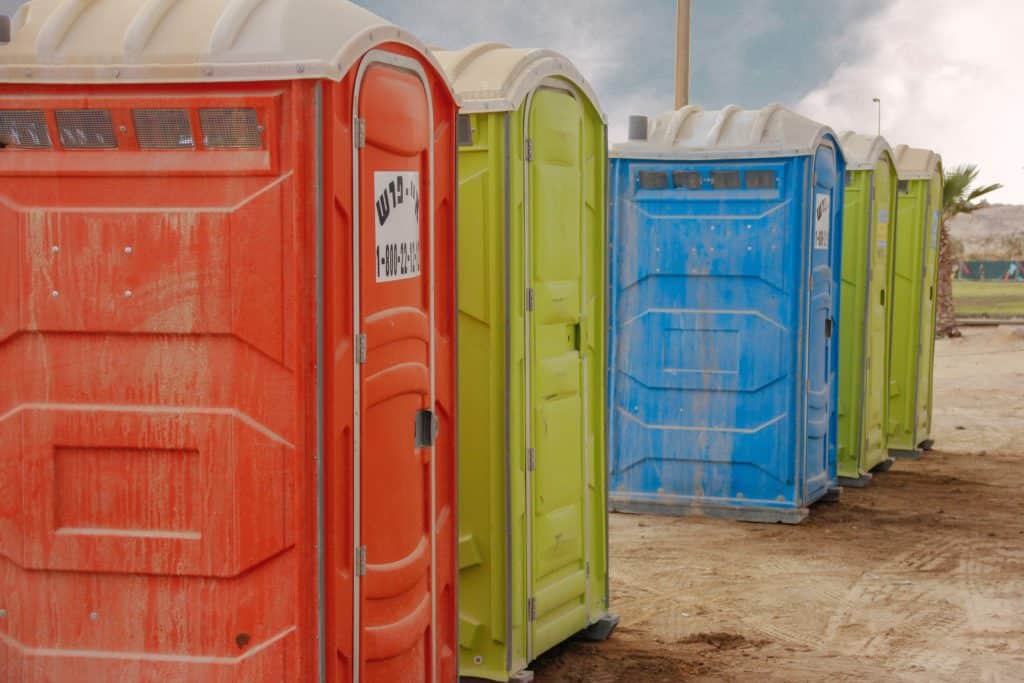
Additional Considerations for Your Plumbing Jobs
If you’re a plumbing contractor and you own your own business, there are a handful of additional considerations that may impact the pricing you provide to customers. We invite you to keep these points in mind the next time you’re working out your hourly rate for new plumbing jobs.
- Toilet facilities. This is more a problem at new construction sites, and on larger, multi-day jobs. Just bear in mind that, if you’re bringing a crew with you, they will need a space to use the restroom. If you’re going to need to bring a porta-potty with you, that will entail an extra cost.
- Trailer or workspace. On larger projects, you may also need to have a trailer or temporary workspace set up to keep everything organized. Again, this can contribute to the total cost of the project, and should always be included in any plumbing contractor estimate.
- Parking. Be sure you have a clear sense of where you can park your truck as you work on the project. If you need to pay an hourly rate for parking somewhere, that’s obviously an important factor in your bidding.
- Cleanup costs. We mentioned this before, but it’s worth repeating that cleanup costs should also be included in the estimate. If you need to haul off a bunch of debris or old water line, ensure that’s factored into your estimate.
- Safety training. Again, this matters primarily for larger jobs. But if you have a lot of less experienced plumbers or apprentices working on the project, you may be required to invest in some safety training. Verify that this expense is included in your quote.
What if Things Break?
Something else to think about is that, during the course of a plumbing job, it’s not impossible that something will break. It may be a tool, a piece of water piping, a sink, or a fixture. Things get dropped, they shatter, they can’t be fixed. On a busy job site, accidents can happen.
That’s one reason why it’s generally best to work a little wiggle room into your estimate. The risk of broken materials or equipment is a real one, so it’s best to bake a few extra percentage points into each quote you provide.
The Final Three Percent
Here’s an incredibly important point for anyone who’s putting together an estimate for a plumbing project: Once you’ve factored in everything, and taken all the steps we’ve listed in this article, we recommend adding three percent to your total estimate.
This isn’t just our idea. This is a fairly common practice in the plumbing industry. This “magic” three percent just gives you a little extra padding. It ensures that, no matter what happens, you can turn a profit. And, it allows you to handle changes or little complications to the project without having to charge “surprise” fees to the customer.
Some plumbers may quibble with that number, saying it should be either a little higher or a little lower than three percent. We like three percent because it allows you to protect your own interests (including take home pay) without it seeming like you’re price gouging, or like you’re being unreasonable. In other words, it’s simply a good, standard, professional rate.
Three Types of Plumbing Job Bids:
There are 3 types of plumbing job bids: New Construction, Remodel, and Service. New Construction is a “take-off” format based on the schematics of the project. Remodel can be the same type of bid as new construction if working for a Contractor. It’s a matter of collecting the data regarding the scope of the job, the material requirement, and the amount of labor it will take to complete the job. The extra factors to be added in are any additional Cost of Goods including permits, equipment, tools, rentals and any other job-related expense. The final factor when putting together a new construction or remodel bid is factoring in overhead and profit.
If working on a remodel directly for a homeowner, the plumbing bid can either be at time and material or a flat rate. For plumbing service bids, it’s typical to use a flat rate. It takes into consideration all of the variables for what it costs to run a plumbing business – it’s called the breakeven, and then factors in the material and the “average” amount of time for a particular task. It’s often easier to give a homeowner a “flat” price so they know what to expect. Often times, when contractors bid a job at time and material, the homeowner is unpleasantly surprised when the labor goes way over their expectation. This oftentimes leads to dissatisfaction by the homeowner because the contractor did not meet or exceed their expectation of what it costs.
Frank Blau Jr. is one of the plumbing industry legends when it comes to Flat Rate Pricing. It’s based on a breakeven mathematical equation. It’s designed for the service sector of plumbing but can be applied to all types of plumbing businesses. There are several steps to determine flat rate pricing, but it can be easily managed in an Excel spreadsheet. The beauty of flat rate is the ability to factor in profitability. It’s not a hit or miss type of equation such as time and material. It’s more of a science because it factors in what it actually costs to run a business. Here is a good chart to explain the process of Flat Rate Pricing.
Another good reference is a good friend of mine, Ellen Rohr. She wrote a book titled, “How Much Should I charge?” Ellen knows what it’s like to run a plumbing business because she did so herself. She had the finance degree but out in the real world couldn’t make ends meet until she figured out what it actually cost to run her business. In her book she explain in simple terms exactly how to get to the “break-even” point and start turning profits.
Bottom line to bidding plumbing jobs: Understand and know exactly what it costs to run your plumbing business. It’s called the break-even, and it’s not about how everyone else is priced. It’s about how much it costs to run your business profitably.
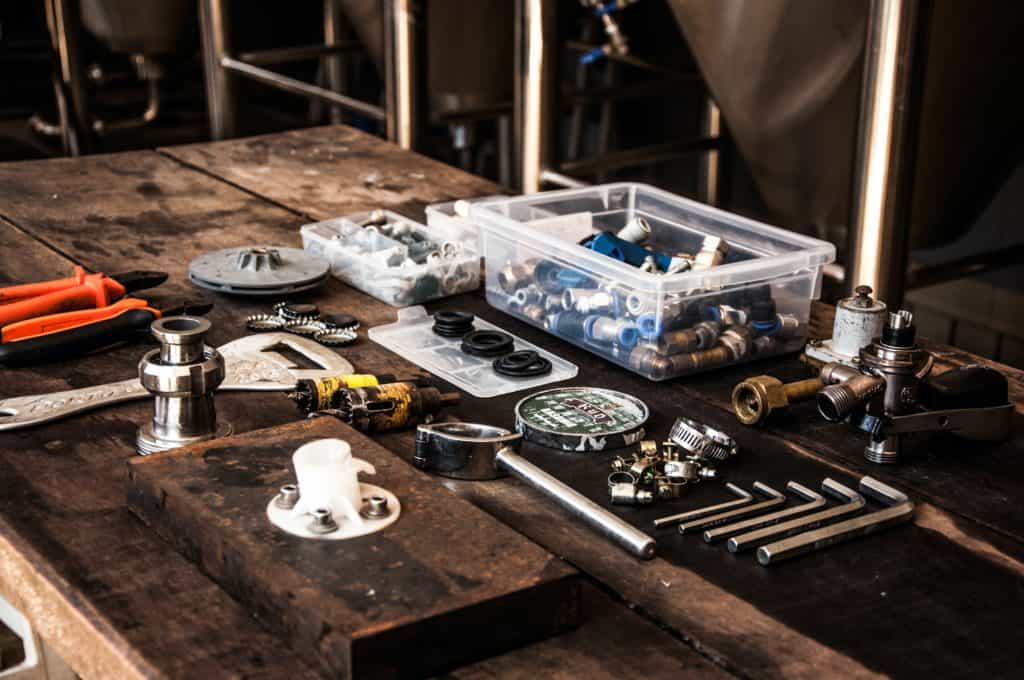
Conclusion: Key Considerations When Bidding on Plumbing Jobs
Whether you’ve been hired to install backflow prevention devices, run a new water line, replace a toilet, or pipe an entire house, it’s always important to get your pricing right.
With a meticulous quote, you can provide full transparency to your customer, minimizing the risk of unwelcome surprises. You can convey your professionalism, and pitch your plumbing services. And, you can protect yourself, ensuring you’re able to take home a decent paycheck.
Learning how to give a good estimate is a critical skill for anyone looking to grow their plumbing business. As you master this skill, we’d also recommend making sure you have licensure marks you can display, an important way of assuring potential customers there you are a qualified and trustworthy professional.
These are just a few of the steps you can take to ensure that, as you make bids for new projects, you’ve got a good chance of having your bid accepted. Remember that you’ll rarely place a bid without any competition, so learning how to price correctly is a crucial skill that may help you stand out from the pack.
Use the guidance in this article to ensure that you’re offering your customers the clearest possible pricing, and also that you’re doing everything you need to be doing to build your company… even during the bidding process.
